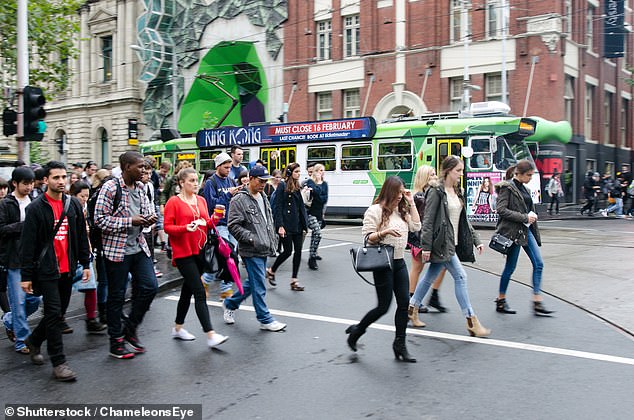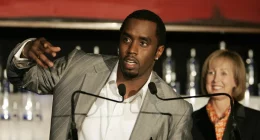White collar jobs typically paying six-figures salaries are expected to be in short supply by 2030 despite quantum advances in artificial intelligence.
The Future Skills Organisation predicted accountants, financial advisers, IT managers, chief executives and bank workers would have the biggest skills gap within five years, even though AI promises to do many thought-based, analytical tasks.
These jobs have average taxable incomes in the six figures, or at least close to it, and are expected to be in even more demand despite rapid technological advances with large language models.
‘Australia faces a projected shortfall of almost 250,000 skilled workers across finance, technology, and business by 2030,’ the Future Skills Organisation said in its Workforce Plan 2025.
‘The education and training pipeline is not yet delivering the volume or alignment needed.
‘Australia’s technology workforce is expanding rapidly, even amid global layoffs – because businesses increasingly rely on digital capabilities, the professionals who deliver them, and the infrastructure that supports them.’
Australia was expected to need 221,400 accountants by 2030, but only 215,400 are forecast to be available – a gap of 6,000.
Accountants are still highly paid, having an average taxable income of $127,000 for management accountants and $99,736 for tax accountants, new tax office data for 2022-23 revealed.

White collar jobs typically paying six-figures salaries are expected to be in short supply by 2030 despite quantum advances in artificial intelligence (stock image)
IT managers were expected to be in short supply, by 16,300 in five years from now, with 130,300 needed from an available pool of 114,000, in a job typically paying $167,154.
‘Technological changes across finance, technology and business are rapid, and without mechanisms to uplift educator knowledge and practice, learners will continue to graduate misaligned to job requirements,’ the Workforce Plan 2025 read.
Bank workers were still expected to be in short supply by 5,300, with 48,500 needed from a labour pool of 43,200, despite branch closures accelerating since more customers did their banking online. Bank tellers typically make $98,058 a year.
Highly-paid financial investment advisers and managers were also expected to be short by 5,900 positions, with a labour supply of 63,300 failing to keep pace with the 69,200 needed.
Financial advisers typically earned an average, taxable income of $143,484, rising to $371,566 for financial investment managers.
The broad category of financial advisers typically earned $191,986, making it Australia’s tenth best paid profession.
Australians now need to earn more than $400,000 a year to be among the top one per cent of income earners, with ophthalmologist eye surgeons having the highest tax income of $643,389, ahead of neurosurgeons on $611,754, and plastic and reconstructive surgeons on $595,969.
Broadly speaking, only surgeons on taxable incomes of $472,475 and anaethetists on $447,193 made the top one per cent.

The Future Skills Organisation predicted accountants, financial advisers and bank workers would have the biggest skills gap within five years, even though AI promises to do many thought-based, analytical tasks (stock image)
Just 125,771 Australians earned at least $408,974 – putting them among the top 0.8 per cent of 16.1million income taxpayers.
The top ten occupations have average salaries above $192,000 – a level more than double the average salary of $73,612.
This list also included finance dealers ($355,233), internal medicine specialists ($342,457), psychiatrists ($280,146), other medical practitioners ($259,802), mining engineers ($206,423), judges or legal professionals ($206,408) and chief executives ($194,987).
The shortfall of CEOs was expected to grow to 7,900, with 61,500 needed from a pool of 53,600.
At the other end of the spectrum, waiters had the lowest average income of $28,885, with many working part-time or casual roles.
Not all the jobs expected to be in short supply are well-paid now.
The Future Skills Organisation expected bookkeepers to be in short supply by 27,100, with 98,700 needed from a labour supply of 71,600, but this professional only has a taxable income of $61,374.
Accounting clerks were tipped to have a labour shortage of 26,000 positions, with 145,800 needed from a pool of 119,800, despite having a lowly pay of $71,630.
Receptionists were also predicted to have in demand, a 15,300 gap between the 193,500 needed and the 178,200 available, for a job typically paying just $44,373.





